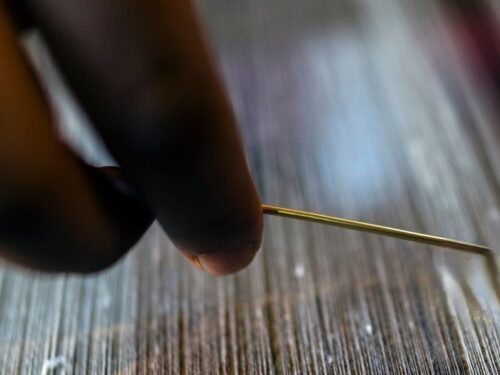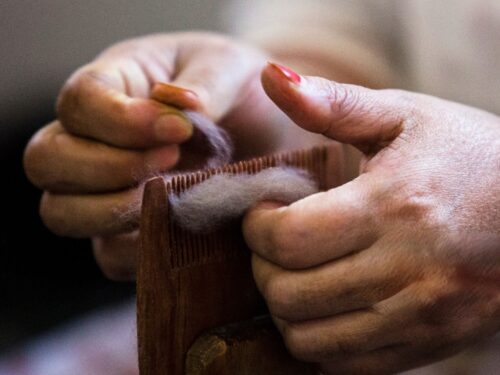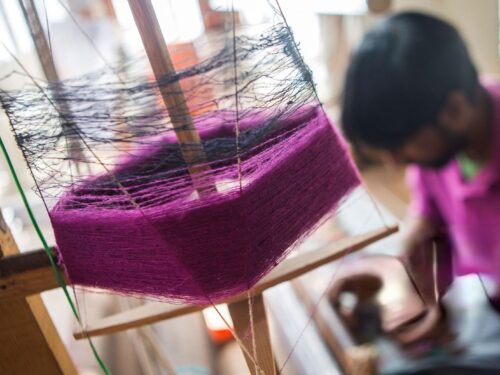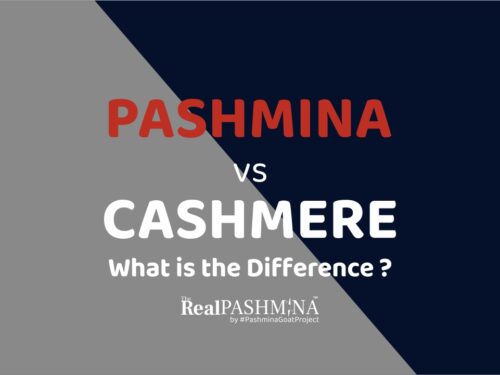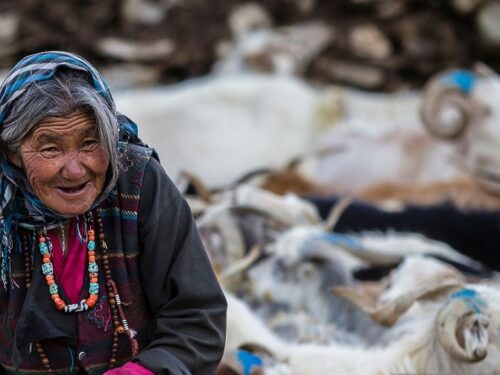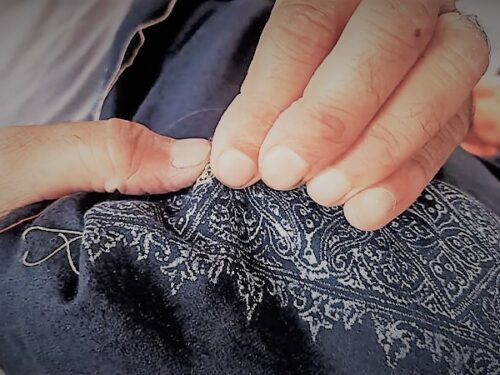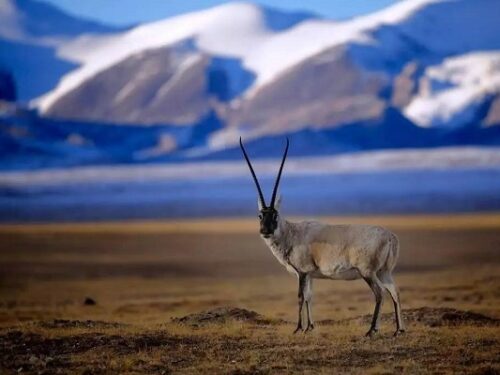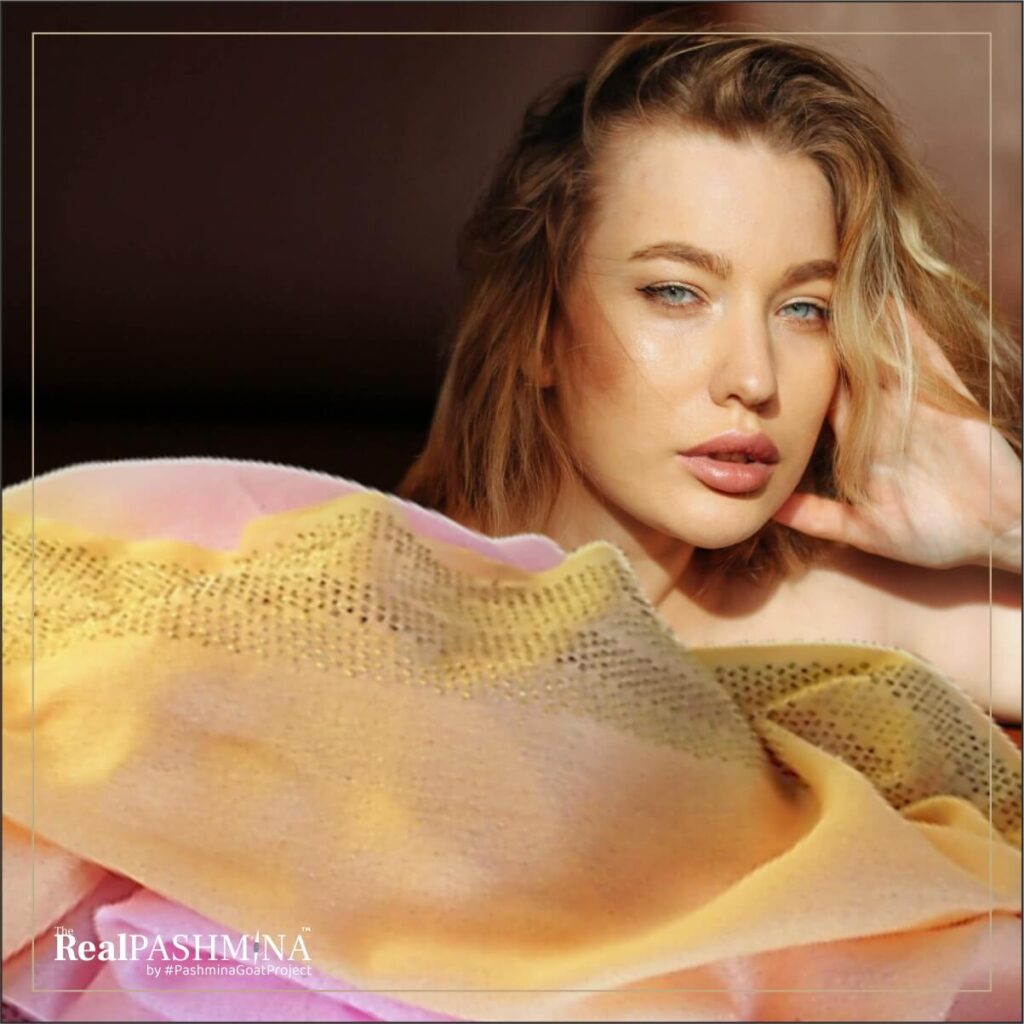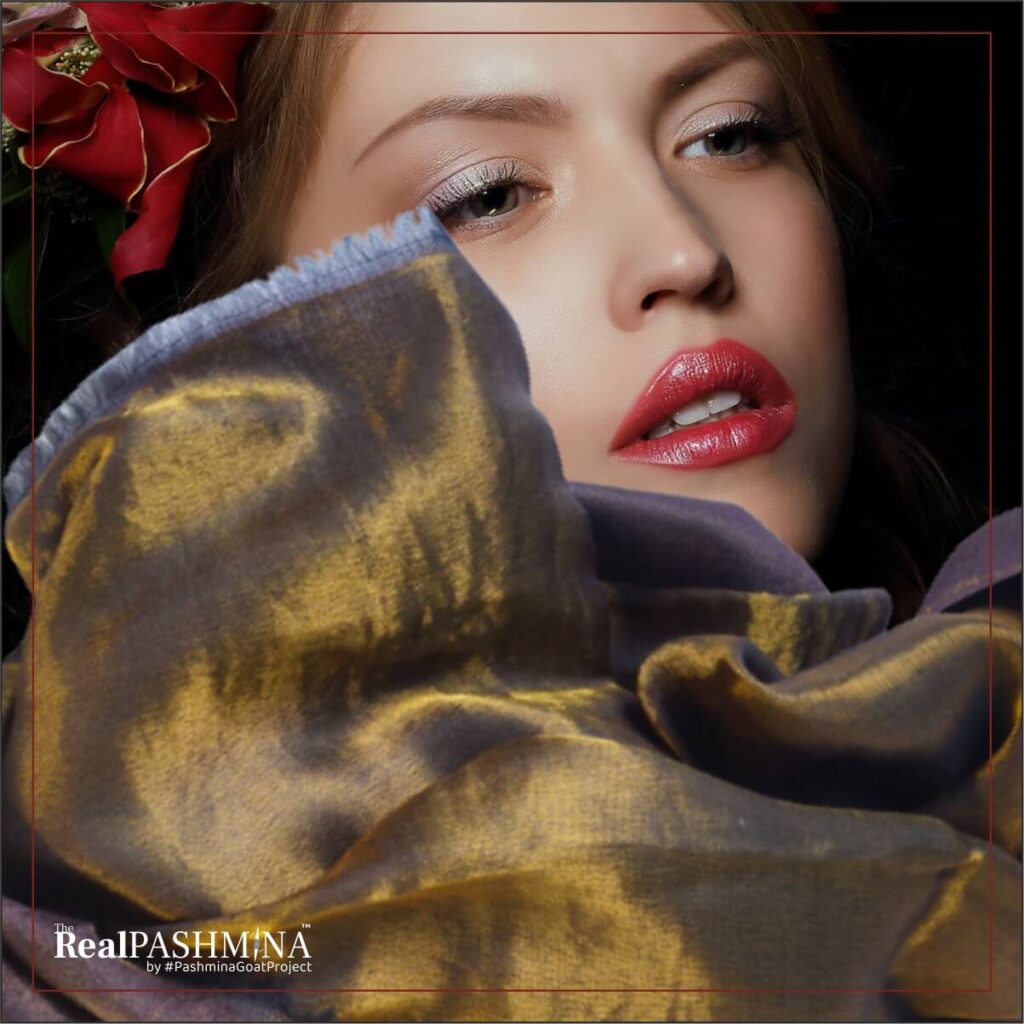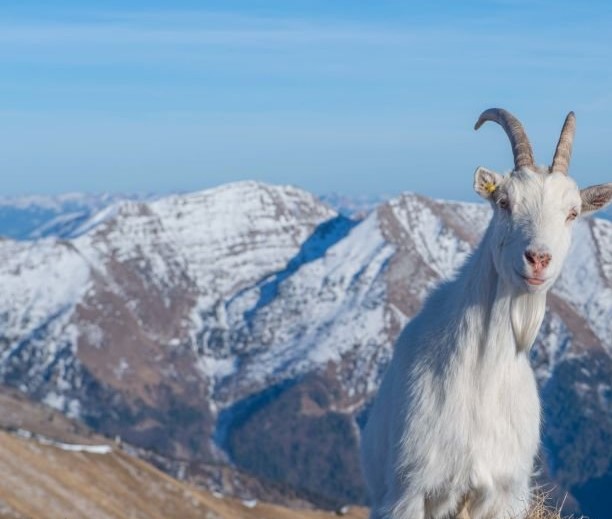
A Specific Breed of Goat in Changthang, Native to Himalayan Region of Ladakh.
Real Pashmina comes from a specific breed of goat known as Changthangi or Pashmina goats, which are native to the Himalayan region of Ladakh in India. Here are some key points with technical details that highlight the differences between normal Cashmere goats and Pashmina/Changthangi goats:
Breed: Pashmina or Changthangi goats belong to a specific breed that is found in the high-altitude regions of the Himalayas, primarily in Ladakh, India. These goats have adapted to the extreme cold climate of the region, and their unique genetic makeup and environment contribute to the high quality of Pashmina fiber.
Fine Fiber Diameter: The diameter of the fiber is a crucial factor that determines the quality of cashmere or Pashmina. Pashmina/Changthangi goats produce the finest luxury fiber, with an average diameter of less than 15 microns, which is significantly finer than the fibers produced by normal Cashmere goats.
Length of Fiber: The length of the fiber is another important factor that affects the quality of cashmere or Pashmina. Pashmina/Changthangi goats produce longer fibers, usually ranging from 3 to 8 cm in length, which is ideal for spinning into fine yarns.
Undercoat Fiber: The Pashmina fiber is obtained from the soft, fine undercoat of the Changthangi or Pashmina goats. This undercoat is different from the coarse outer guard hairs that protect the goats from harsh weather conditions. Pashmina/Changthangi goats have a higher ratio of fine undercoat fibers to coarse outer guard hairs, making their fiber more precious and luxurious.
Climate and Environment: The harsh cold climate and high-altitude environment of the Himalayas where Pashmina/Changthangi goats are raised contribute to the unique qualities of Pashmina fiber. The extreme weather conditions result in the goats producing a finer undercoat to keep themselves warm, which in turn leads to the production of finer and softer Pashmina fiber.
Nutrition and Grazing: The diet and grazing patterns of Pashmina/Changthangi goats also play a role in the quality of their fiber. These goats primarily graze on high-altitude pastures that are rich in natural vegetation, which provides them with the necessary nutrition to produce fine and soft fibers.
Hand-combing Process: Pashmina/Changthangi goats are not sheared like regular Cashmere goats. Instead, the fine undercoat fibers are gently combed out by hand during the molting season when the goats naturally shed their winter coat. This labor-intensive and time-consuming hand-combing process ensures that the fibers are obtained without causing any harm or stress to the goats, and helps in maintaining the purity and quality of the Pashmina fiber.
Pashmina or Changthangi goats produce the finest luxury fiber that is highly prized for its exceptional softness, fineness, and warmth. The unique genetic makeup, high-altitude environment, nutrition, grazing patterns, and hand-combing process of Pashmina/Changthangi goats contribute to the distinct differences between normal Cashmere goats and Pashmina/Changthangi goats, making Pashmina fiber one of the most exquisite and luxurious natural fibers in the world.
Indulge in the Exquisite World of Pashmina Shawls at www.TheRealPashmina.com
Shop our Finest Collection of Cashmere Shawls, Kashmiri Pashmina, and Handmade Luxury Shawls. Elevate Your Style and Become a Pashmina Expert with Our High-Quality, Eco-Friendly Shawls. Explore Unique Designs including Natural Dye, Embroidered, Fine Wraps, Scarves, and Fashion Accessories. Experience the Ultimate Luxury of Authentic Pashmina, Crafted with Care by Experts. Shop Now and Discover the Timeless Elegance of Pashmina Shawls.
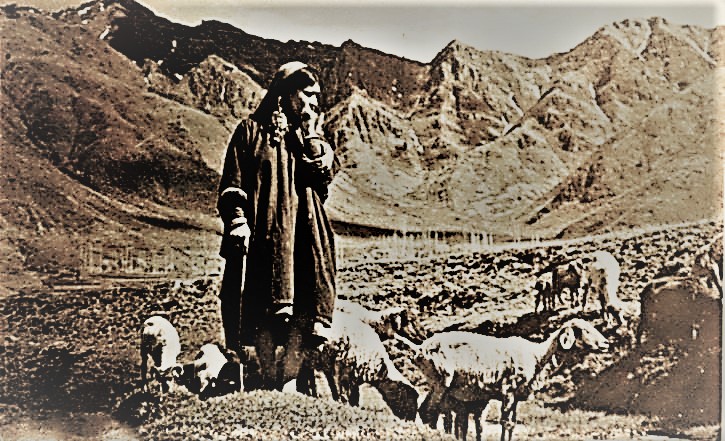
Recent post
The Real Pashmina is an Industry Aggregator bringing Global Sellers (Artisans, Brands, Stores) & Buyers (Retail & Wholesale) of Real Pashmina & Cashmere on One Market.
Pashmina Goat Project is the Official Knowledge Partner to this Platform for Standards, Quality, Sustainability & Ethics.

